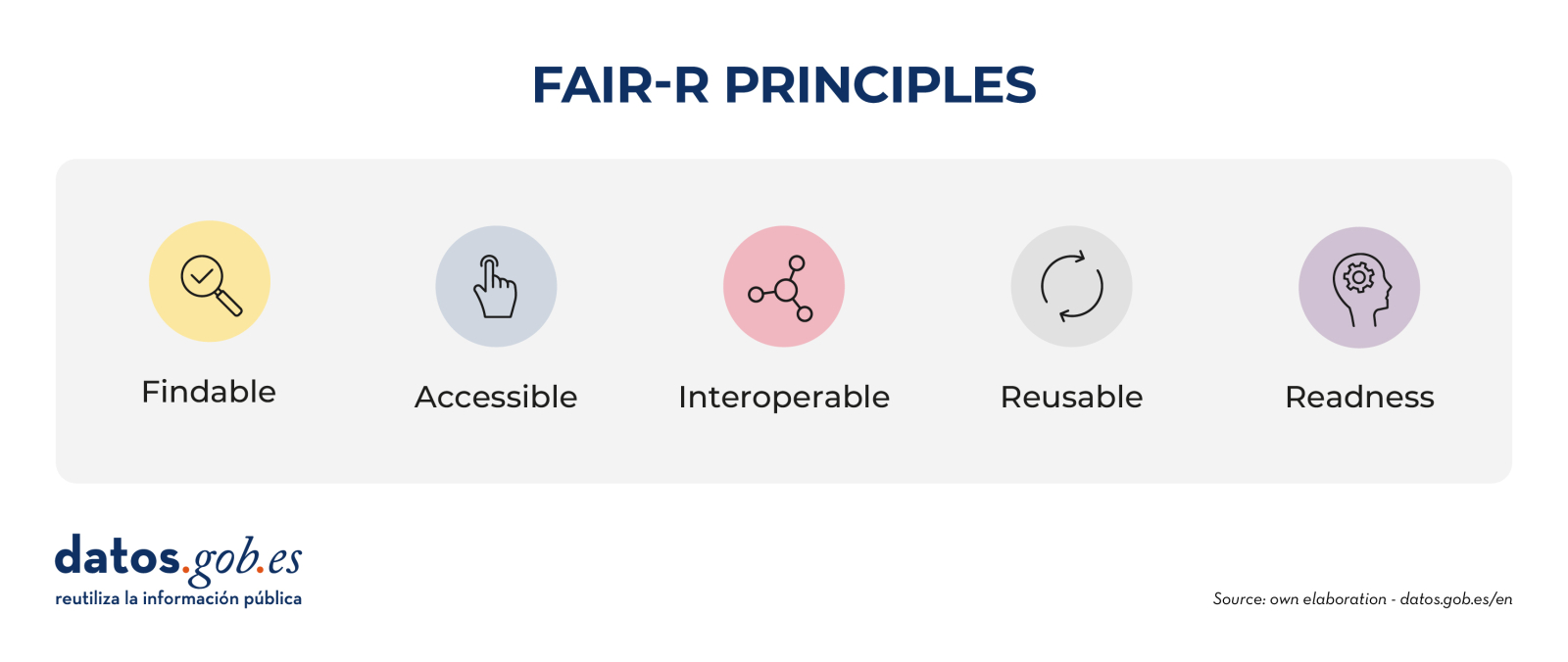
Over the last few years we have seen spectacular advances in the use of artificial intelligence (AI) and, behind all these achievements, we will always find the same common ingredient: data. An illustrative example known to everyone is that of the language models used by OpenAI for its famous ChatGPT, such as GPT-3, one of its first models that was trained with more than 45 terabytes of data, conveniently organized and structured to be useful.
Without sufficient availability of quality and properly prepared data, even the most advanced algorithms will not be of much use, neither socially nor economically. In fact, Gartner estimates that more than 40% of emerging AI agent projects today will end up being abandoned in the medium term due to a lack of adequate data and other quality issues. Therefore, the effort invested in standardizing, cleaning, and documenting data can make the difference between a successful AI initiative and a failed experiment. In short, the classic principle of "garbage in, garbage out" in computer engineering applied this time to artificial intelligence: if we feed an AI with low-quality data, its results will be equally poor and unreliable.
Becoming aware of this problem arises the concept of "AI Data Readiness" or preparation of data to be used by artificial intelligence. In this article, we'll explore what it means for data to be "AI-ready", why it's important, and what we'll need for AI algorithms to be able to leverage our data effectively. This results in greater social value, favoring the elimination of biases and the promotion of equity.
What does it mean for data to be "AI-ready"?
Having AI-ready data means that this data meets a series of technical, structural, and quality requirements that optimize its use by artificial intelligence algorithms. This includes multiple aspects such as the completeness of the data, the absence of errors and inconsistencies, the use of appropriate formats, metadata and homogeneous structures, as well as providing the necessary context to be able to verify that they are aligned with the use that AI will give them.
Preparing data for AI often requires a multi-stage process. For example, again the consulting firm Gartner recommends following the following steps:
- Assess data needs according to the use case: identify which data is relevant to the problem we want to solve with AI (the type of data, volume needed, level of detail, etc.), understanding that this assessment can be an iterative process that is refined as the AI project progresses.
- Align business areas and get management support: present data requirements to managers based on identified needs and get their backing, thus securing the resources required to prepare the data properly.
- Develop good data governance practices: implement appropriate data management policies and tools (quality, catalogs, data lineage, security, etc.) and ensure that they also incorporate the needs of AI projects.
- Expand the data ecosystem: integrate new data sources, break down potential barriers and silos that are working in isolation within the organization and adapt the infrastructure to be able to handle the large volumes and variety of data necessary for the proper functioning of AI.
- Ensure scalability and regulatory compliance: ensure that data management can scale as AI projects grow, while maintaining a robust governance framework in line with the necessary ethical protocols and compliance with existing regulations.
If we follow a strategy like this one, we will be able to integrate the new requirements and needs of AI into our usual data governance practices. In essence, it is simply a matter of ensuring that our data is prepared to feed AI models with the minimum possible friction, avoiding possible setbacks later in the day during the development of projects.
Open data "ready for AI"
In the field of open science and open data, the FAIR principles have been promoted for years. These acronyms state that data must be locatable, accessible, interoperable and reusable. The FAIR principles have served to guide the management of scientific and open data to make them more useful and improve their use by the scientific community and society at large. However, these principles were not designed to address the new needs associated with the rise of AI.
Therefore, the proposal is currently being made to extend the original principles by adding a fifth readiness principle for AI, thus moving from the initial FAIR to FAIR-R or FAIR². The aim would be precisely to make explicit those additional attributes that make the data ready to accelerate its responsible and transparent use as a necessary tool for AI applications of high public interest

What exactly would this new R add to the FAIR principles? In essence, it emphasizes some aspects such as:
- Labelling, annotation and adequate enrichment of data.
- Transparency on the origin, lineage and processing of data.
- Standards, metadata, schemas and formats optimal for use by AI.
- Sufficient coverage and quality to avoid bias or lack of representativeness.
In the context of open data, this discussion is especially relevant within the discourse of the "fourth wave" of the open data movement, through which it is argued that if governments, universities and other institutions release their data, but it is not in the optimal conditions to be able to feed the algorithms, A unique opportunity for a whole new universe of innovation and social impact would be missing: improvements in medical diagnostics, detection of epidemiological outbreaks, optimization of urban traffic and transport routes, maximization of crop yields or prevention of deforestation are just a few examples of the possible lost opportunities.
And if not, we could also enter a long "data winter", where positive AI applications are constrained by poor-quality, inaccessible, or biased datasets. In that scenario, the promise of AI for the common good would be frozen, unable to evolve due to a lack of adequate raw material, while AI applications led by initiatives with private interests would continue to advance and increase unequal access to the benefit provided by technologies.
Conclusion: the path to quality, inclusive AI with true social value
We can never take for granted the quality or suitability of data for new AI applications: we must continue to evaluate it, work on it and carry out its governance in a rigorous and effective way in the same way as it has been recommended for other applications. Making our data AI-ready is therefore not a trivial task, but the long-term benefits are clear: more accurate algorithms, reduced unwanted bias, increased transparency of AI, and extended its benefits to more areas in an equitable way.
Conversely, ignoring data preparation carries a high risk of failed AI projects, erroneous conclusions, or exclusion of those who do not have access to quality data. Addressing the unfinished business on how to prepare and share data responsibly is essential to unlocking the full potential of AI-driven innovation for the common good. If quality data is the foundation for the promise of more humane and equitable AI, let's make sure we build a strong enough foundation to be able to reach our goal.
On this path towards a more inclusive artificial intelligence, fuelled by quality data and with real social value, the European Union is also making steady progress. Through initiatives such as its Data Union strategy, the creation of common data spaces in key sectors such as health, mobility or agriculture, and the promotion of the so-called AI Continent and AI factories, Europe seeks to build a digital infrastructure where data is governed responsibly, interoperable and prepared to be used by AI systems for the benefit of the common good. This vision not only promotes greater digital sovereignty but reinforces the principle that public data should be used to develop technologies that serve people and not the other way around.
Content prepared by Carlos Iglesias, Open data Researcher and consultant, World Wide Web Foundation. The contents and views reflected in this publication are the sole responsibility of the author.


